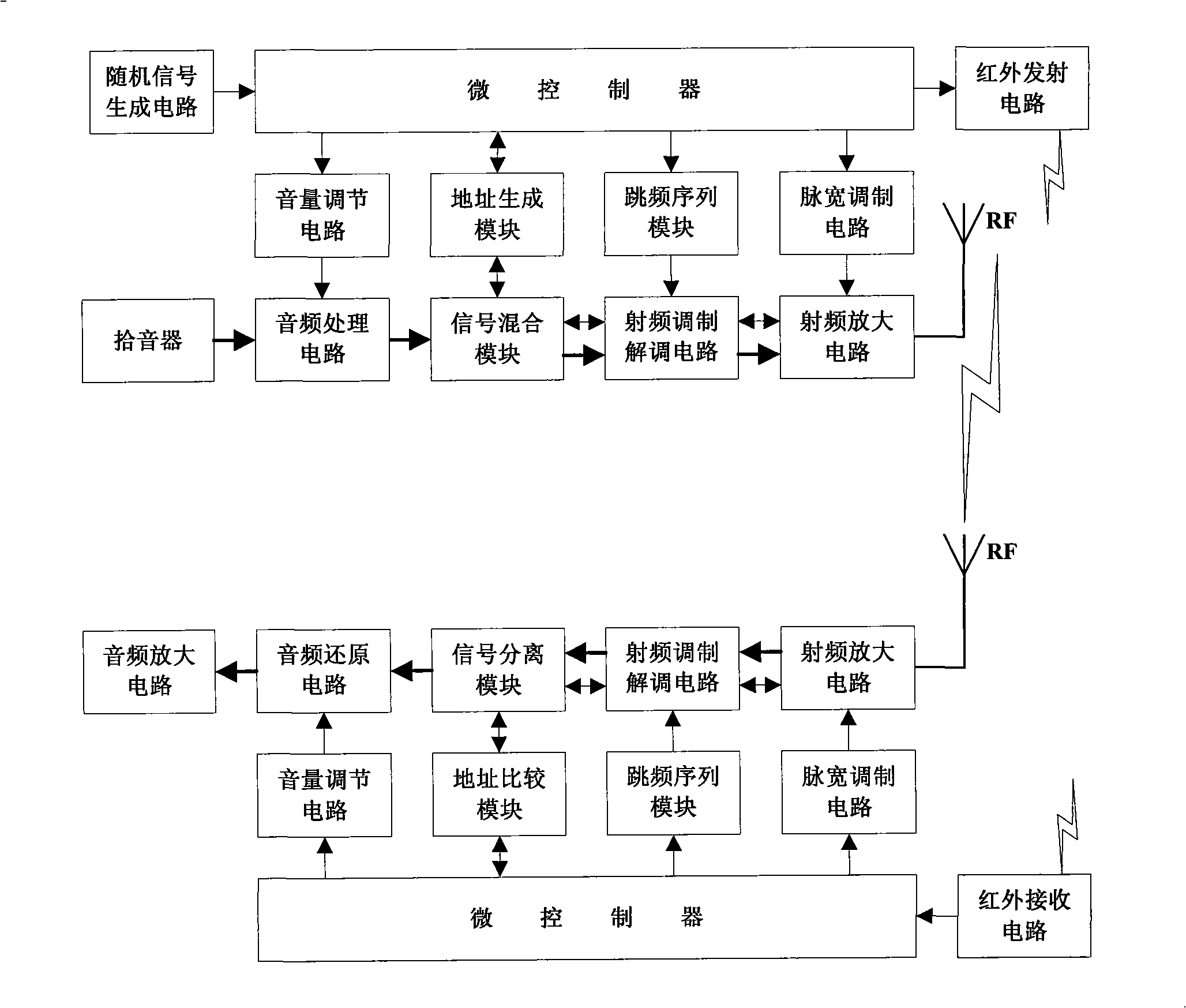Random addressing self-adapting frequency-hopping wireless microphone and receiving machine thereof
A technology of random addressing and wireless microphones, applied in the near-field transmission system of transceivers, electrical components, electric loudspeakers, etc., can solve the problems of inability to achieve arbitrary pairing, limit the use of wireless microphones, and no changes
- Summary
- Abstract
- Description
- Claims
- Application Information
AI Technical Summary
Problems solved by technology
Method used
Image
Examples
Embodiment 1
[0054] Embodiment 1: From the modulation of the wireless microphone to the demodulation and restoration of the receiver, all are analog audio signals, and the control signal is a digital signal, which contains an address code.
[0055] In wireless microphones and receivers, a very high frequency (VHF) or ultra high frequency (UHF) or microwave radio frequency circuit transceiver module is used, followed by a radio frequency amplifier circuit. This kind of radio frequency amplifier circuit contains a DC gain control terminal, and its gain is controlled by a microcontroller. At the same time, the radio frequency circuit transceiver module also accepts the frequency hopping sequence pattern provided by the microcontroller to realize the frequency hopping of the working frequency, so that the transceiver and the transceiver can establish the same frequency communication. In the FLASH or EEPROM of the single-chip micro-controller, the memory first presets and stores all open and id...
Embodiment 2
[0057] Embodiment 2: The wireless microphone has an A / D converter, which converts the analog audio signal into a digital audio signal, forms a digital frame of a specified length with the address code, synchronization code, and parity code of the wireless microphone, and then modulates it on the working frequency. The receiver has a D / A converter, the receiver demodulates the digital frame, and separates the address code and digital audio. The digital audio is restored by the D / A converter.
[0058] The wireless microphone and receiver adopt radio frequency transceiver modules in the microwave segment, such as radio frequency transceiver modules with DSP or CPLD or FPGA or ARM series microprocessors.
[0059] The wireless microphone can accept the digital audio after A / D conversion, and has a radio frequency amplifier circuit with a DC gain control terminal. When the transmitter and receiver are turned on or reset, the digital audio signal and the address code, synchronizatio...
PUM
 Login to View More
Login to View More Abstract
Description
Claims
Application Information
 Login to View More
Login to View More - R&D
- Intellectual Property
- Life Sciences
- Materials
- Tech Scout
- Unparalleled Data Quality
- Higher Quality Content
- 60% Fewer Hallucinations
Browse by: Latest US Patents, China's latest patents, Technical Efficacy Thesaurus, Application Domain, Technology Topic, Popular Technical Reports.
© 2025 PatSnap. All rights reserved.Legal|Privacy policy|Modern Slavery Act Transparency Statement|Sitemap|About US| Contact US: help@patsnap.com



